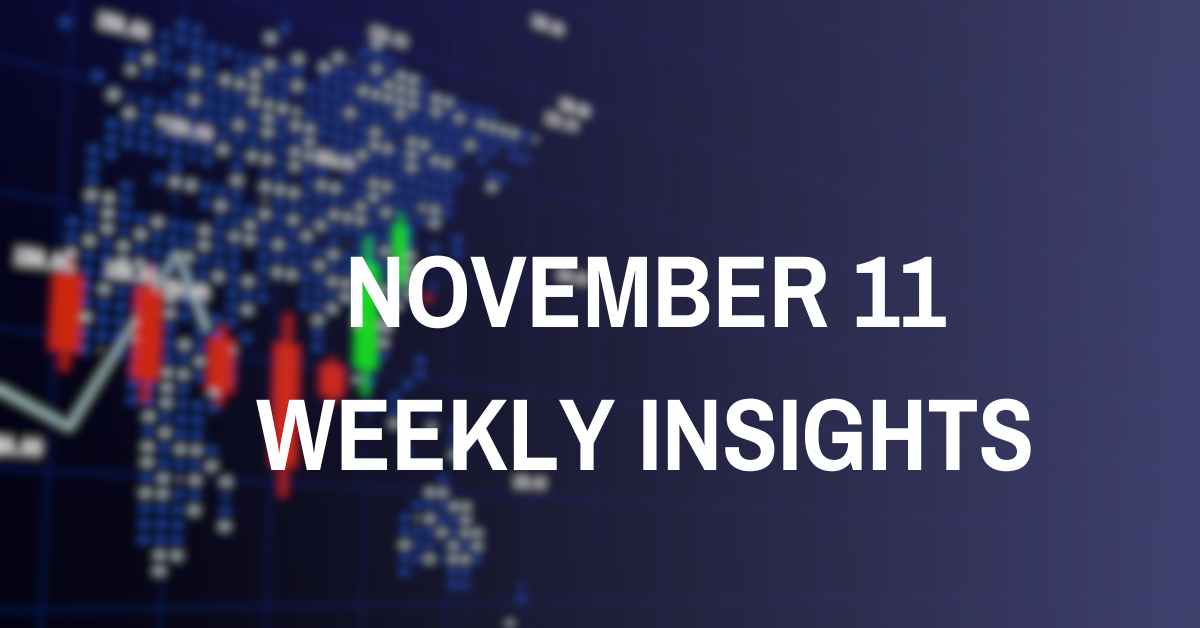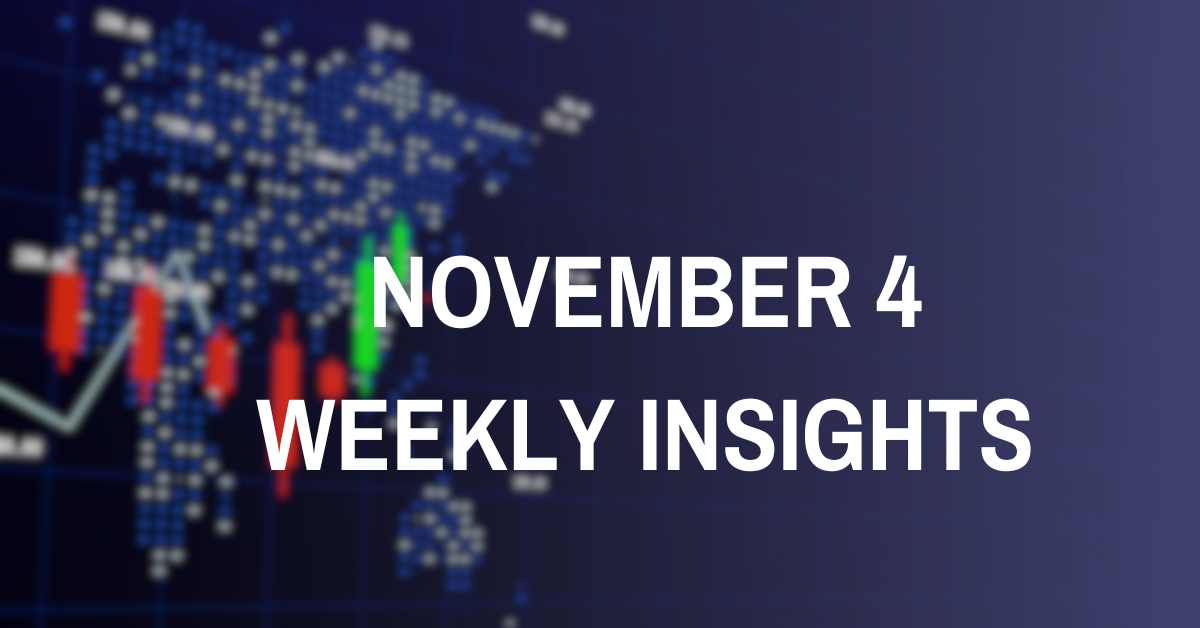Welcome to the Topaz Global Weekly Market Outlook for July 15, 2024. In this comprehensive report, we provide a detailed analysis of key financial market indicators and their implications for the trading week. This week, we examine macroeconomic highlights, fundamental information, and detailed instrument outlooks. As always, we encourage you to review our previous insights and analysis from the July 8th Market Outlook to maintain continuity in your trading strategies.
House View
Our current market stance is as follows:
•Bullish: US Dollar Index (DXY), Gold (XAUUSD), US Oil (WTI Crude Oil)
•Bearish: Euro (EURUSD), UK Pound (GBPUSD), Bitcoin (BTCUSD)
•Neutral: Nasdaq 100 (USTEC)
Understanding the broader market sentiment is crucial for making informed trading decisions. This week’s outlook provides a balanced view of where opportunities and risks lie.
Macroeconomic Highlights
North America
US Inflation Data: The latest inflation figures from the US have provided mixed signals to the market. June’s Consumer Price Index (CPI) slowed to 3.0% year-over-year (YoY), which was slightly below the consensus estimate of 3.1% and a notable decrease from the previous month’s 3.3%. Core CPI, which excludes food and energy prices, also decelerated to 3.3% YoY, aligning with market expectations but still reflecting underlying inflationary pressures.
Despite this deceleration in CPI, the Producer Price Index (PPI) showed a slight uptick, rising to 2.6% YoY from a revised 2.4%. This increase in PPI, driven primarily by the service sectors, suggests that inflationary pressures are not uniformly easing across the economy. The core PPI, which excludes volatile food and energy costs, also rose to 3.0%, indicating that some inflationary pressures remain persistent.
Fed Rate Cuts: The cooling inflation data has bolstered market expectations for a Federal Reserve rate cut in September, with an additional cut likely by the end of the year. Market sentiment, as measured by futures contracts, indicates a 95% chance of a rate cut in September, up from 75% the previous week. This shift in expectations is largely due to the softer inflation data, which suggests that the Fed may have more room to maneuver in its monetary policy.
Economic Events: Key upcoming events in North America include Fed Chair Jerome Powell’s speech and the release of the New York Empire State Manufacturing Index. Powell’s remarks will be closely watched for any hints about the Fed’s future monetary policy direction, especially in light of the recent inflation data. The Empire State Manufacturing Index will provide insights into the health of the manufacturing sector, which has shown signs of slowing in recent months.
Europe (UK, EU, CH)
ECB and Interest Rates: In Europe, the European Central Bank (ECB) is expected to maintain steady interest rates at this week’s meeting. The ECB’s decision comes amid mixed economic signals from the Eurozone. While headline CPI moderated to 2.5% YoY in June, down from May’s rebound, persistent service inflation at 4% YoY for the past two months indicates underlying inflationary pressures. The ECB is likely to continue its cautious approach, balancing the need to support economic growth with the goal of containing inflation.
UK GDP and Inflation: The UK economy continues to defy expectations with robust growth figures. In May, the economy expanded by 0.4% month-over-month (MoM), driven by a low base effect and broad-based growth across various sectors. Improving real incomes have also contributed to increased consumption, further supporting economic growth. However, June’s headline CPI is projected to decelerate to 1.9% YoY, potentially undershooting the Bank of England’s (BoE) 2% target. This deceleration could influence the BoE’s future rate decisions, with the market anticipating a rate cut in August.
Economic Events: In addition to the ECB meeting, key economic events in Europe include the release of German retail sales data and the Eurogroup meetings. These events will provide further insights into the economic health of the region and the potential policy responses from European policymakers.
Asia and Oceania (JP, CN, AU, NZ)
Yen Volatility: The yen remains a complex scenario, facing significant volatility last week. A suspected intervention by Japanese authorities caused a surge against the dollar, marking the third such action this year. This intervention highlights the authorities’ commitment to managing yen weakness amid increasing inflationary pressures. According to a recent Bank of Japan (BoJ) survey, households expect price levels to rise by 8.7% annually over the next five years, the highest level since 2006. This expectation, coupled with recent softer-than-expected US CPI data, has somewhat eased pressure on the yen by supporting the case for potential Fed rate cuts.
China’s Economic Data: China’s economic landscape remains complex amid domestic and international challenges. Recent data reveals mixed sector performance, with June’s trade surplus hitting a record high of 308 billion USD in exports versus 209 billion USD in imports. This trade surplus has raised concerns about global trade tensions. Domestically, GDP growth is expected to slow to 5.1% YoY in Q2 2024, signaling economic cooling despite first-half growth of 5.2%, which meets the annual target. Expectations are growing for comprehensive stimulus measures, particularly to stabilize the real estate market.
Australian Dollar: The Australian dollar (AUD) held steady, with expectations for the Reserve Bank of Australia (RBA) to lag in the global rate-cutting cycle due to persistent domestic inflation. Futures markets imply a 22% chance of an RBA rate hike in August, down from 37% at the beginning of June. This shift reflects the market’s anticipation of at least two US rate cuts this year, which could influence the AUD’s performance.
Economic Events: Key economic events in the Asia-Pacific region include China’s GDP data release, the RBA meeting, and the Japanese trade balance figures. These events will provide further insights into the economic health of the region and the potential policy responses from local policymakers.
Fundamental Information
Metals
Gold (XAUUSD): Gold prices have continued to rise, supported by increased speculations of interest rate cuts by the Fed. The probability of more interest rate cuts has increased significantly, pushed by softer-than-expected US economic data. Central banks have continued to diversify their reserves, giving more weight to gold. There is a clear positive correlation between gold as a percentage of total reserves and gold prices. Gold could remain buoyed by geopolitical risks, central banks’ buying, and monetary policy changes.
The US Consumer Price Index rose by 3.1% YoY, while the Core CPI YoY grew by 3.3%. The US Core Service inflation excluding Shelter declined below 2% for the first time since 2021. The released data pushed the market to expect the Fed to cut interest rates three times by the end of this year, starting in September, then in November, and December. This is well-stretched compared to the Fed’s dot plot, released in June’s monetary policy meeting. During his testimony before Congress (ahead of US inflation data), Fed Chairman Jerome Powell acknowledged the progress on inflation and the changes in the labor market but didn’t show extended intentions of cutting interest rates quickly.
Energies
Crude Oil (WTI): US crude oil inventories decreased significantly as the summer holiday season began. In the week ending July 5th, according to the EIA Petroleum Status Report, crude oil inventories in the US decreased by 3.444 million barrels, exceeding the market’s projection of a 3.0 million barrel reduction. Additionally, there was a decrease of 0.702 million barrels in crude stocks at the Cushing, Oklahoma delivery hub, and gasoline stocks dropped by 2.006 million barrels, surpassing the anticipated 0.5 million draw.
Furthermore, in the week ending July 5th, US utilities injected 65 billion cubic feet of gas into storage, surpassing market projections of a 56 billion cubic feet increase, marking the 13th consecutive week of seasonal growth in storage. This rise elevated stockpiles to 3,199 billion cubic feet, exceeding last year’s levels by 283 billion cubic feet and surpassing the five-year average of 2,695 billion cubic feet by 504 billion cubic feet. Conversely, distillate stockpiles, inclusive of diesel and heating oil, experienced a noteworthy rise of 4.884 million barrels, the largest in six months, contrasting the expected increase of 0.1 million barrels.
Natural Gas: The natural gas market also saw significant movements. With US utilities injecting more gas into storage than anticipated, the natural gas market is preparing for potential price fluctuations as the heating season approaches. The sustained growth in storage levels provides a buffer, but market participants remain vigilant about weather patterns and their impact on demand.
Indices
US30 (Dow Jones Industrial Average): The Dow Jones Industrial Average (US30) extended its rally, driven by stronger-than-expected corporate earnings and easing inflation. The index is testing the 78.6% Fibonacci extension. If US30 sustains its bullish momentum with a breakout above 40300, the index could rise towards the 127.2% Fibonacci extension at 41800. Conversely, a retracement below 40300 could prompt a retest of 39000. If a bearish breakout of the ascending channel and 39000 support occurs, the index could extend its decline towards 37200.
Nasdaq 100 (USTEC): The Nasdaq 100 pared recent gains after hitting its intraday resistance at 20750. Despite a significant plunge, the movement has not confirmed its trend reversal. The index stays within the 20000-20500 range. If USTEC returns above the 20500 resistance, the index may be back on track for further gains to the 138.2% Fibonacci extension target at around 21000. Conversely, if USTEC fails to break above the 20500 resistance, the index may consolidate within the 20000-20500 range.
Hang Seng (HK50): The Hang Seng index is likely to rise towards 18800 if it maintains above 18100. This week, the focus remains on China’s third plenum, where the ruling Communist Party could outline policies to boost growth and address challenges for the coming years. Despite ongoing issues in the property sector, trade tensions, and low consumer confidence, markets remain optimistic about potential reforms during the plenum to create more sustainable growth drivers and reduce reliance on the real estate sector.
Cryptos
Bitcoin (BTCUSD): Bitcoin prices are approaching the 60,000 threshold due to the increased probability of Donald Trump winning the US presidential election and the increased expectations of a Fed rate cut. The recent attack on Trump has increased his chances of winning the US presidential election in November, potentially creating a positive environment for the cryptocurrency market. Over the past week, the total market net inflow into bitcoin spot ETFs reached almost one billion USD, led by IBIT and FBTC with over 880 million USD, contributing to the rise in bitcoin prices.
Litecoin (LTCUSD): Litecoin prices rose steadily over the past week. The deceleration in US inflation and the anticipation of a Fed rate cut make the market expect more overflowing liquidity. However, holders’ position reductions persist, which pressures prices. Aside from that, bitcoin inflows to exchanges also affect investors’ perception of other major coins like litecoin. The condition could lead to increased selling pressure and further price drops.
Instrument Outlooks
DXY (US Dollar Index)
•Support Levels: 104.00, 103.40
•Resistance Levels: 104.70, 105.15
•The DXY is testing the 104.00 support after breaking its ascending channel. A further decline could confirm a downward trend towards 103.40. If the index fails to reenter the channel, it might test the breakout zone at around 104.70 before plunging further.
XAUUSD (Gold – US Dollar)
•Support Levels: 2400, 2380
•Resistance Levels: 2450, 2424
•Gold prices are nearing a record high. Sustained bullish momentum could push prices beyond 2450. Lower interest rates enhance the appeal of non-yielding assets like gold by reducing the opportunity cost of investing in them.
EURUSD (Euro – US Dollar)
•Support Levels: 1.0880, 1.0800
•Resistance Levels: 1.0960, 1.1064
•The euro-dollar is poised for further gains if it breaks the 1.0960 resistance, potentially reaching 1.1064. The structure has potentially shifted upward after the price broke the upper boundary of the Symmetrical Triangle pattern.
GBPUSD (UK Pound – US Dollar)
•Support Levels: 1.2860, 1.2800
•Resistance Levels: 1.3000, 1.3140
•The pound-dollar may continue its rally if it breaks above the 1.3000 resistance, targeting 1.3140. This solid upward movement confirms the upward shift in structure.
AUDUSD (AU Dollar – US Dollar)
•Support Levels: 0.6710, 0.6645
•Resistance Levels: 0.6795, 0.6870
•The aussie-dollar remains strong, with potential gains towards 0.6870 if the current momentum continues. The price stays above both EMAs and within its ascending channel, indicating its upward shift in structure.
USDJPY (US Dollar – JP Yen)
•Support Levels: 156.00, 154.00
•Resistance Levels: 158.00, 160.00
•The dollar-yen outlook depends on the BoJ meeting, with potential declines if the price breaches 156.00. After hitting its 38-year high, USDJPY plunged as the weekend approached. The price dipped below EMA21 and closed below the ascending channel and the 158.00 level.
US30 (Dow Jones Industrial Average)
•Support Levels: 39000, 37200
•Resistance Levels: 40300, 41800
•The US30 could rise towards 41800 if it sustains above 40300. Otherwise, a retracement to 39000 is possible. The index is testing the 78.6% Fibonacci extension and could rise towards the 127.2% Fibonacci extension at 41800 if it maintains its bullish momentum.
USTEC (Nasdaq 100)
•Support Levels: 20000, 19500
•Resistance Levels: 20500, 21000
•The Nasdaq 100 remains within the 20000-20500 range. A breakout above 20500 could signal further gains to the 138.2% Fibonacci extension target at around 21000. The mixed outlook from tech firms may limit the rally, if not pressure the index.
HK50 (Hang Seng)
•Support Levels: 17600, 17000
•Resistance Levels: 18100, 18800
•The Hang Seng is likely to rise towards 18800 if it maintains above 18100. The index also closed above both EMAs, and a break above the last swing high at around 18100 could indicate a potential continuation of its uptrend.
USOIL (WTI Crude Oil)
•Support Levels: 80.00, 77.50
•Resistance Levels: 82.50, 87.00
•WTI crude oil could gain upward momentum towards 87.00 if it breaches 82.50. The price stays above the EMA21, indicating a positive signal for a trend reversal.
BTCUSD (Bitcoin – US Dollar)
•Support Levels: 56000, 52000
•Resistance Levels: 60000, 65500
•Bitcoin is approaching the 60,000 threshold. Sustained support above this level could lead to gains towards 65,500. The market is closely watching the potential impact of Mt. Gox distribution on bitcoin prices.
Economic Calendar
Monday, July 15, 2024
•Japan – Marine Day (Holiday)
•CNY Fixed Asset Investment (YoY) (Jun)
•CNY GDP (QoQ) (Q2)
•CNY GDP (YoY) (Q2)
•EUR German Retail Sales (MoM) (May)
•USD Fed Chair Powell Speaks
Tuesday, July 16, 2024
•JPY Tertiary Industry Activity Index (MoM)
•EUR German ZEW Economic Sentiment (Jul)
•USD Retail Sales (MoM) (Jun)
•CAD Core CPI (YoY) (Jun)
Wednesday, July 17, 2024
•GBP CPI (MoM) (Jun)
•EUR Core CPI (YoY) (Jun)
•USD Building Permits (Jun)
•USD Industrial Production (MoM) (Jun)
Thursday, July 18, 2024
•AUD Employment Change (Jun)
•GBP Average Earnings Index +Bonus (May)
•EUR ECB Monetary Policy Statement
•USD Initial Jobless Claims
Friday, July 19, 2024
•GBP Retail Sales (MoM) (Jun)
•EUR German PPI (MoM) (Jun)
•CAD Core Retail Sales (MoM) (May)
By keeping a close eye on these economic events and integrating them into your trading strategy, you can better anticipate market movements and make informed decisions.
Analysis and Insights
To provide further depth, let’s delve into some of the significant economic indicators and market signals from the past week and their potential implications:
1. Cooling CPI and Fed Rate Cuts: The cooling of the Consumer Price Index (CPI) suggests that the Federal Reserve might implement its first rate cut in September. This expectation is based on the recent deceleration in inflation, which gives the Fed more flexibility in its monetary policy. Traders should monitor the pace of easing in other regions as well, as simultaneous rate cuts by other central banks could neutralize the impact on currency pairs.
2. ECB’s Steady Rates: The European Central Bank (ECB) is likely to maintain steady interest rates at this week’s meeting. This decision comes amid a backdrop of mixed economic data, with persistent service inflation suggesting underlying inflationary pressures. The ECB’s cautious approach is designed to balance the need for economic support with the goal of containing inflation.
3. UK Inflation and GDP Growth: The UK economy has shown resilience with a 0.4% month-over-month GDP expansion in May. However, the June headline CPI is projected to decelerate to 1.9% year-over-year, potentially undershooting the Bank of England’s target. This data will be crucial for determining the timing of the first rate cut, anticipated in August.
4. Yen and BoJ Intervention:
he yen remains under pressure despite the Bank of Japan’s (BoJ) vigilance and potential US economic weakness. The BoJ’s suspected interventions highlight the challenges of managing yen weakness amid increasing inflationary pressures. The market will be watching the BoJ’s next moves closely.
5. China’s Trade Surplus and Economic Growth: China’s record trade surplus and mixed economic data present a complex landscape. The trade surplus raises concerns about global trade tensions, while domestically, GDP growth is expected to slow. Comprehensive stimulus measures are anticipated to stabilize the real estate market and support economic momentum.
Final Thoughts
For traders and investors, staying informed about financial market indicators and economic events is crucial. The insights provided in this report aim to enhance your decision-making capabilities and help you navigate the complexities of the market. Be sure to review our previous week’s market outlook for additional context and continuity.
By following these comprehensive insights and updates, you can stay ahead in the dynamic world of trading. Let us know if you have any questions or need further analysis. Happy trading!
Resources and Further Reading
1.Topaz Global Weekly Market Outlook: July 8, 2024
2.Investing.com Economic Calendar
By leveraging these resources, traders can deepen their understanding of market trends and enhance their trading strategies.




